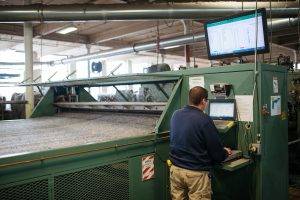INTRODUCTION:
World has experienced a lot of jerks after the spread of COVID – 19. It has adversely impacted all the sectors. MSMEs have also been badly affected by this pandemic. But MSMEs (Micro, Small & Medium Enterprises) have always proved as the growth engine of any economy across the world. Be it developed economy or developing or underdeveloped, MSMEs have been contributing a lot towards the growth of that country. We cannot think about growth if there is no presence of MSME units. Its presence is inevitable. Its contribution towards industrial output, exports and generation of employment at low capital cost is commendable. MSME units are usually known as labor intensive units in comparison to large enterprises. In most of the countries labor generation through this sector is more than 90%.
In India the contribution of MSMEs is remarkable in overall industrial growth of the economy. During the past decades this sector is growing rapidly in India. With the introduction of new technologies its contribution in GDP is also increasing rapidly. Indian units are progressing in every area of this sector. MSMEs are leaving its remarkable and sustainable footprints in the area of manufacturing units, service sectors, food processing, textiles and garments, information technology, agro based products and so on. India is known as the country of villages and more than 60% of Indian population is residing in villages. MSMEs are not only contributing in urban areas but its contribution in rural industrialization and reduction of regional imbalances is remarkable.
DEFINITION:
MSMEs – Micro, Small & Medium Enterprises have been playing leading role in developing the economy and generating employment opportunities across the world. Therefore, this sector is being promoted everywhere. Let us first look what MSMEs are and how MSMEs are defined?
There are various parameters which are used for defining MSMEs across the world. In some countries it is defined on the basis of number of workers engaged in the activity. In some countries it is defined on the basis of turnover, investment in plant and machinery etc.
In our country, Micro enterprises are those units where investment in the plant and machinery is up to Rs. 1.00 crore and turnover is up to Rs. 5.00 crores. Whereas , Small and Medium Enterprises are defined as the enterprises in which investment in the said category is up to Rs. 10.00 crores and up to Rs. 50.00 crores respectively. Turnover in Small and Medium Enterprises do not exceed Rs. 50.00 crores and Rs. 250.00 crores respectively.

CONTRIBUTION OF MSMEs:
If we talk about the contribution of MSMEs in the development of world economy we find that role of MSMEs have always been significant both in terms of contribution to GDP and creation of employment opportunities. These were the sector where COVID – 19 pandemic had greatest impact. All these units were shaken after the announcement of lockdown across the globe. As we are aware that MSMEs are units which play major part of the industrial activities both in developed as well as in developing countries and hence their role is very instrumental in development of economic activities. Recent studies show that MSMEs in high income countries normally contribute approximately 50% in their GDPs. Taiwan and Columbia are the countries having high economic growth only because of their guided dynamic MSMEs.

If we take example of two developed countries like US and Japan, it clearly demonstrates that how MSMEs have contributed in the development of these countries. In US, MSME enterprises are often called foundation enterprises and these are the core of the country’s industrial base. While we go through the various data available on internet, we find that the contribution of real estates and leasing service in US is almost 25% of total MSME business. Wholesale trade’s contribution from MSMEs is second largest i.e. 17% of total MSME business. In Japan MSME sector is having highest proportion of retail business i.e. 20% of total MSME business. The second largest segment in Japan is of service industry which contributes to 18% of total MSME share.
In India, CII – Confederation of Indian Industries data shows that there are almost 63.4 million units. If we talk about the contribution of MSMEs, almost 45% of our total exports are being done from this sector only. Recent data released by honorable minister Mr. Nitin Gadkari shows that 115 million workforce have got employment through MSME sector. Out of total MSMEs around 20% of the units are located in rural areas. This indicates that people who are residing in rural areas are also getting employment from this sector. Contribution of service sector has surpassed two third of all the contribution across the globe whereas in India, contribution to GDP by Service sector is 49.88%. Government has also target to grow the manufacturing sectors by 12-14% p.a. MSMEs have also attracted the women workforce and encouraged the women entrepreneurship. 14% of total units are led by women entrepreneur only.
As we are aware that we were very much dependent on imports of various medical equipments , sanitizers, mask during the beginning of pandemic. But very soon MSMEs geared their pace and started manufacturing mask, sanitizers, PPE kits and other medical equipments. The role of MSMEs in manufacturing of all these medical and hygiene related materials were well appreciated by all. India not only fulfilled its domestic requirements but was able to support other countries as well.
INITIATIVES TAKEN BY THE INDIAN GOVERNMENT:
Role of MSMEs has been very crucial in the overall generation of employment opportunities, growth of per capita income and therefore the present government has been focusing on comprehensive development of this sector. Indian government has vision to emerge as one of the strongest economy in the world and expects to be $5 trillion economy by 2025. To fulfill this goal government has given major impetus to the backbone of our economy i.e. MSME sector.
Government has introduced a number of schemes for the promotion of this sector. CII data shows that out of total 55.8 million MSMEs only 8.2 million have got license. Therefore the government has simplified the procedures for registration of these units. Government has revived the procedures for redevelopment of sick units. Start-ups are being promoted. Income tax rules have been reframed and many privileges have been provided to these units. The availability of financial support in the form of credit guarantee and credit linked capital subsidy schemes, PMMY, Stand – up India, PMEGP have been introduced. Credit related platforms like psbloansin59minutes.com have been introduced. To fight the setback on account of COVID – 19 pandemic, Indian Government has already provided collateral free funds up to Rs. 3.00 lakh crore.
Government is also taking initiatives for the promotion of exports of goods manufactured by these units. ‘Make in India’, ‘Make for India’, ‘Vocal for Local’, ‘Atmnirbhar Bharat’ etc. schemes have also been introduced. For providing impetus to export of their finished products, Government has reframed International Cooperation Scheme which is having many objectives for igniting the growth in MSME sector. Under the scheme various MSME business delegations would be sent abroad for discovering new avenues in technological invention and upgradation. These delegations will facilitate joint ventures and will explore new markets for MSMEs products. Collaborations with foreign parties will enhance our capabilities and improve exports as well. Units are being encouraged and facilitated for participation in various international trade fairs/exhibitions. Government has planned to make the reimbursement up to 95% of airfare and space rent of entrepreneurs for the purpose.
After the advent of FINTECH companies the availability of funds for these MSMEs has become seamless. Hitherto, a major constraint for the development of MSME sector has been availability of finance from the traditional banks. Availability of finance has already been revolutionized by introducing various simplified schemes in the form of PMMY, Start – up India and many other such schemes. Thereafter, Government has been promoting various FINTECH companies for providing hassle free finance to these MSME units. These FINTECH companies are using analytics and scanning matrix like their sales and fulfillment records and are ready to disburse the loan within few hours. Payments systems provided by these FINTECH companies have also proved to be a better platform to that of the traditional payment system. All these steps are encouraging the entrepreneurs to start new units smoothly. Even very small players like our neighborhood ‘kirana stores’ are not an exception to this.
Government has also taken various steps to revolutionize the tax rules. One country one tax has been adopted and Goods and Services Tax – GST have now been implemented. Government has also created Specialized Economic Zones – SEZs for providing infrastructure for their development. Land on simplified lease has been provided and Industrial Development Corporations have been created for the betterment of these units. Many Skill Development Programme have been launched for developing the knowhow amongst the small entrepreneurs.
Very encouraging and latest initiative of the government is ‘development of freight corridor’ which is likely to be completed by 2022. This is going to be a game changer in the area of transportation of goods and services. Our waterways are also being developed to give impetus for cost effective transportation of manufactured goods.
Conclusion:
Hence, it is clear after the above discussion that MSMEs are very instrumental in developing any economy be it India or any other country. It not only creates the employment opportunities and increase per capita income but also makes the country self reliant. To conclude if we want to develop sustainability we have to promote, encourage and facilitate MSMEs units.

Vinay Kumar
Manager,
State Bank Institute of Learning and Development, Deoghar.





